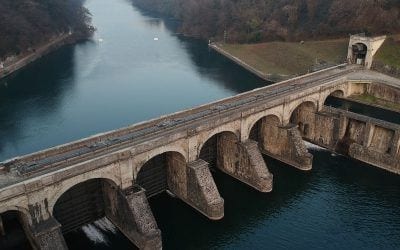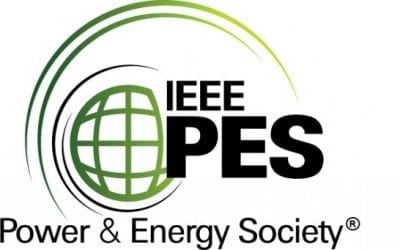AUTHORS:
Lorenzo Gigoni, Alessandro Betti, Emanuele Crisostomi, Alessandro Franco, Mauro Tucci, Fabrizio Bizzarri and Debora Mucci.
ABSTRACT:
The ability to accurately forecast power generation from renewable sources is nowadays recognized as a fundamental skill to improve the operation of power systems. Despite the general interest of the power community in this topic, it is not always simple to compare different forecasting methodologies, and infer the impact of single components in providing accurate predictions. In this paper, we extensively compare simple forecasting methodologies with more sophisticated ones over 32 photovoltaic (PV) plants of different sizes and technology over a whole year. Also, we try to evaluate the impact of weather conditions and weather forecasts on the prediction of PV power generation.
References
Web tools concerning performance analysis and planning support for solar energy plants starting from remotely sensed optical images
AUTHORS:
Lorenzo Gigoni, Alessandro Betti, Emanuele Crisostomi, Alessandro Franco, Mauro Tucci, Fabrizio Bizzarri and Debora Mucci.
ABSTRACT:
The ability to accurately forecast power generation from renewable sources is nowadays recognized as a fundamental skill to improve the operation of power systems. Despite the general interest of the power community in this topic, it is not always simple to compare different forecasting methodologies, and infer the impact of single components in providing accurate predictions. In this paper, we extensively compare simple forecasting methodologies with more sophisticated ones over 32 photovoltaic (PV) plants of different sizes and technology over a whole year. Also, we try to evaluate the impact of weather conditions and weather forecasts on the prediction of PV power generation.
NREL Best Practices Handbook for the Collection and Use of Solar Resource Data for Solar Energy Applications
AUTHORS:
Lorenzo Gigoni, Alessandro Betti, Emanuele Crisostomi, Alessandro Franco, Mauro Tucci, Fabrizio Bizzarri and Debora Mucci.
ABSTRACT:
The ability to accurately forecast power generation from renewable sources is nowadays recognized as a fundamental skill to improve the operation of power systems. Despite the general interest of the power community in this topic, it is not always simple to compare different forecasting methodologies, and infer the impact of single components in providing accurate predictions. In this paper, we extensively compare simple forecasting methodologies with more sophisticated ones over 32 photovoltaic (PV) plants of different sizes and technology over a whole year. Also, we try to evaluate the impact of weather conditions and weather forecasts on the prediction of PV power generation.
Condition monitoring and early diagnostics methodologies for hydropower plants
AUTHORS:
Alessandro Betti, Emanuele Crisostomi, Gianluca Paolinelli, Antonio Piazzi, Fabrizio Ruffini and Mauro Tucci.
ABSTRACT:
Hydropower plants are one of the most convenient option for power generation, as they generate energy exploiting a renewable source, they have relatively low operating and maintenance costs, and they may be used to provide ancillary services, exploiting the large reservoirs of available water. The recent advances in Information and Communication Technologies (ICT) and in machine learning methodologies are seen as fundamental enablers to upgrade and modernize the current operation of most hydropower plants, in terms of condition monitoring, early diagnostics and eventually predictive maintenance. While very few works, or running technologies, have been documented so far for the hydro case, in this paper we propose a novel Key Performance Indicator (KPI) that we have recently developed and tested on operating hydropower plants. In particular, we show that after more than one year of operation it has been able to identify several faults, and to support the operation and maintenance tasks of plant operators. Also we show that the proposed KPI outperforms conventional multivariable process control charts, like the Hotelling t2 index.
MOWGLI (MicrO reneWable Grid for ruraL Indian areas) project on ETN magazine
AUTHORS:
Ciro Lanzetta and Fabrizio Ruffini.
ABSTRACT:
The Mowgli feasibility study started in 2018 funded by the European Space Agency (ESA) with the involvement of the India Energy Storage Alliance (IESA) as stakeholder. The aim is to evaluate the technical and economic feasibility of satellite-based services for microgrids. Designed by i-EM, Mowgli is a solution that provides a set of services for optimal microgrid planning, designing and operational and maintenance (O&M) applications in urban and rural areas developing countries, with focus on India as a user case.
A Machine Learning model for long-term power generation forecasting at bidding zone level
AUTHORS:
Michela Moschella, Alessandro Betti, Emanuele Crisostomi and Mauro Tucci.
ABSTRACT:
The increasing penetration level of energy generation from renewable sources is demanding for more accurate and reliable forecasting tools to support classic power grid operations (e.g., unit commitment, electricity market clearing or maintenance planning). For this purpose, many physical models have been employed, and more recently many statistical or machine learning algorithms, and data-driven methods in general, are becoming subject of intense research. While generally the power research community focuses on power forecasting at the level of single plants, in a short future horizon of time, in this time we are interested in aggregated macro-area power generation (i.e., in a territory of size greater than 100000 km2) with a future horizon of interest up to 15 days ahead. Real data are used to validate the proposed forecasting methodology on a test set of several months.
A scalable predictive maintenance model for detecting wind turbine component failures based on SCADA data
AUTHORS:
Lorenzo Gigoni, Alessandro Betti, Emanuele Crisostomi and Mauro Tucci.
ABSTRACT:
This work presents a novel Predictive Maintenance model for the main Wind Turbine components based on SCADA data and combination of Machine Learning and Classical Statistical approach. According to the impact of maintenance cost on the wind power Levelized Cost of Energy (LCOE), the components Gearbox, Generator, and Main Bearing have been modelled. The model was trained on historical nominal behavior periods of components specific SCADA tags. Test campaign was divided in two stages: test on historical faults for model training and validation, and Real-Time test for proper integration in the plant operators’ activities. Test on historical faults of six wind farms located in Italy and Romania, corresponding to an overall installed nominal power of 283 MW, demonstrate outstanding capabilities of anomaly prediction up to 2 months before device unscheduled downtime. Additionally, test on 12- months Real-Time phase confirm its ability to detect several anomalies, therefore allowing the operators to identify root case and schedule maintenance before reaching the catastrophic stage.
A Decision Support System based on Earth observation exploitation for renewable energy plants management
AUTHORS:
Andrea Masini, Ciro Lanzetta, Giuseppe Leotta, Gian Lorenzo Giuliattini Burbui, Pasquale Guerrisi and Maria Luisa Lo Trovato.
ABSTRACT:
Nowadays remote sensing information can be exploited to support the management of renewable energy plants during all its life cycles. Earth observation satellite can provide a continuous monitoring of each location of the earth. Low-resolution and high-resolution imagery can be exploited to obtain accurate descriptions of the monitored scenarios/plants. Moreover, the use of unmanned air vehicle can provide complementary information to monitor important features not detectable with satellite sensors. i-EM and Flyby developed and tested a system, called 4D-REDSS (4D Renewable plants Decision Support System) aimed to exploit remote sensed data to advantage and support the management of solar plant during the construction and pre-commissioning phase.
Photovoltaic power forecasting with ensemble of learners: large test case from PV plants in Italy, Zambia and Australia
AUTHORS:
Lorenzo Gigoni, Alessandro Betti, Fabrizio Ruffini, Ciro Lanzetta, Antonio Piazzi, Mauro Tucci e Michela Moschella.
ABSTRACT:
An innovative ensamble-based forecasting method based on a number of machine learning techniques independently trained and combined in a cooperative ensemble fashion.
Day-ahead hourly forecasting of power generation from photovoltaic plants
AUTHORS:
Lorenzo Gigoni, Alessandro Betti, Emanuele Crisostomi, Alessandro Franco, Mauro Tucci, Fabrizio Bizzarri and Debora Mucci.
ABSTRACT:
The ability to accurately forecast power generation from renewable sources is nowadays recognized as a fundamental skill to improve the operation of power systems. Despite the general interest of the power community in this topic, it is not always simple to compare different forecasting methodologies, and infer the impact of single components in providing accurate predictions. In this paper, we extensively compare simple forecasting methodologies with more sophisticated ones over 32 photovoltaic (PV) plants of different sizes and technology over a whole year. Also, we try to evaluate the impact of weather conditions and weather forecasts on the prediction of PV power generation.
Big data and predictive maintenance in PV – The state of the art
AUTHORS:
Alessandro Betti, Fabrizio Ruffini, Lorenzo Gigoni and Antonio Piazzi.
ABSTRACT:
Big data-based predictive analytics techniques using artificial intelligence technologies offer exciting new possibilities in the field of solar operations and maintenance. The authors examine how the power of data can be harnessed to safeguard the technical and economic performance of the PV fleet.
Predictive maintenance in photovoltaic plants with big data approach
AUTHORS:
Alessandro Betti, Maria Luisa Lo Trovato, Fabio Salvatore Leonardi, Giuseppe Leotta, Fabrizio Ruffini and Ciro Lanzetta.
ABSTRACT:
This paper presents a novel and flexible solution for fault prediction based on data collected from
SCADA system. Fault prediction is offered at two different levels based on a data-driven approach: (a) generic
fault/status prediction and (b) specific fault class prediction, implemented by means of two different machine learning
based modules built on an unsupervised clustering algorithm and a Pattern Recognition Neural Network, respectively.
Model has been assessed on a park of six photovoltaic (PV) plants up to 10 MW and on more than one hundred inverter
modules of three different technology brands. The results indicate that the proposed method is effective in (a) predicting
incipient generic faults up to 7 days in advance with sensitivity up to 95% and (b) anticipating damage of specific fault
classes with times ranging from few hours up to 7 days. The model is easily deployable for on-line monitoring of
anomalies on new PV plants and technologies, requiring only the availability of historical SCADA and fault data, fault
taxonomy and inverter electrical datasheet.







